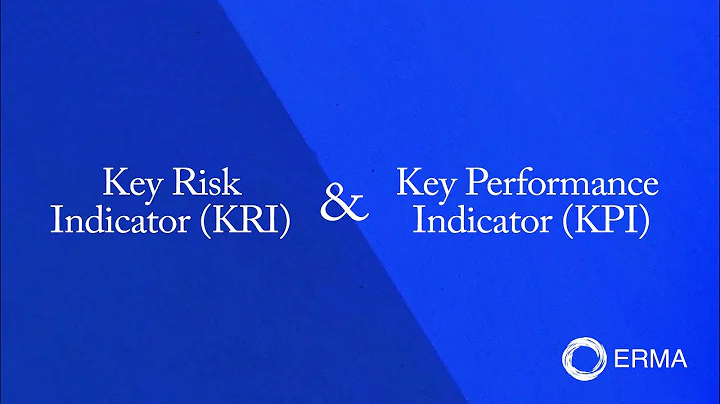What are the key risk indicators of credit risk?
Credit Risk Indicators: Potential KRIs include high loan default rates, low credit quality, the percentage of high-risk loans in the portfolio, or high loan concentrations in specific sectors. These indicators are crucial for managing the bank's credit portfolio and minimizing potential losses.
| Risk | Measurable KRI |
|---|---|
| ISP Failure | Number of ISP outages |
| Data loss | Number of system backup failures |
| Unaddressed critical incidents | Time taken to resolve an incident/ Number of critical incidents |
| Anonymous data leak | Number of active database administrator accounts |
The level of risk is determined by the particular arrangements for settlement. Factors in such arrangements that have a bearing on credit risk include: the timing of the exchange of value; payment/settlement finality; and the role of intermediaries and clearing houses.
The Basic Indicator Approach is an approach to calculate operational risk capital under the Basel II Accord, and uses the bank's total gross income as a risk indicator for the bank's operational risk exposure and sets the required level of operational risk capital as 15% of the bank's annual positive gross income ...
A consumer may fail to make a payment due on a mortgage loan, credit card, line of credit, or other loan. A company is unable to repay asset-secured fixed or floating charge debt. A business or consumer does not pay a trade invoice when due. A business does not pay an employee's earned wages when due.
Credit risk or default risk involves inability or unwillingness of a customer or counterparty to meet commitments in relation to lending, trading, hedging, settlement and other financial transactions. The Credit Risk is generally made up of transaction risk or default risk and portfolio risk.
A good key risk indicator must have 3 essential characteristics to meet their objective: be measurable, quantifiable and accurate. This means, first of all, that it must be quantified as an amount or percentage, or it must have values that show evolution over time.
Key risk indicator (KRI) KRIs measure how risky certain activities are in relation to business objectives. They provide early warning signals when risks (both strategic and operational) move in a direction that may prevent the achievement of KPIs.
Credit risk arises from the potential that a borrower or counterparty will fail to perform on an obligation. For most banks, loans are the largest and most obvious source of credit risk. However, there are other sources of credit risk both on and off the balance sheet.
Lenders also use these five Cs—character, capacity, capital, collateral, and conditions—to set your loan rates and loan terms.
What is credit risk strategy?
The objectives of credit risk strategy are to ensure the safety and soundness of the institutions credit portfolio, minimize the losses that could be caused by defaults by borrowers, and earn an acceptable rate of return on assets.
- Constantly evaluate your data sources. ...
- Validate your scorecard model consistently. ...
- Proactively monitor your model. ...
- Leverage dynamic data. ...
- Take advantage of artificial intelligence and machine learning. ...
- Prepare for financial crimes. ...
- Use today's top software.

To sum up, the expected loss is calculated as follows: EL = PD × LGD × EAD = PD × (1 − RR) × EAD, where : PD = probability of default LGD = loss given default EAD = exposure at default RR = recovery rate (RR = 1 − LGD).
Credit risk assessment is the assessment of the credit risk of a counterparty against the financial institution's credit acceptance criteria, to ascertain the counterparty's ability and willingness to honour its credit obligations, either at origination or at any point during the lifetime of a credit.
Leading KRIs are measures that are considered predictive in nature. They are derived from metrics that can help to forecast future occurrences. Lagging KRIs are metrics based on historical measures. These help to identify trends in the firm.
Key performance indicators (KPIs) are measurable and quantifiable metrics used to evaluate and assess the performance of your company or organization's activities. It's commonly used in sales and marketing to track revenue generation, customer acquisition, conversion rates, and more.
Key performance indicators (KPIs) measure a company's success vs. a set of targets, objectives, or industry peers. KPIs can be financial, including net profit (or the bottom line, net income), revenues minus certain expenses, or the current ratio (liquidity and cash availability).
Key Risk Indicator (KRI) is a very strong tool for the management and the Board to give an early warning signals to any emerging risks. It is therefore important to create the right risk indicators that can represent the emerging risks.
Lenders also use these five Cs—character, capacity, capital, collateral, and conditions—to set your loan rates and loan terms.
Concept 86: Four Cs (Capacity, Collateral, Covenants, and Character) of Traditional Credit Analysis. The components of traditional credit analysis are known as the 4 Cs: Capacity: The ability of the borrower to make interest and principal payments on time.
What are the 5 key components your credit score is made up of?
What's in my FICO® Scores? FICO Scores are calculated using many different pieces of credit data in your credit report. This data is grouped into five categories: payment history (35%), amounts owed (30%), length of credit history (15%), new credit (10%) and credit mix (10%).